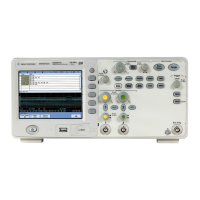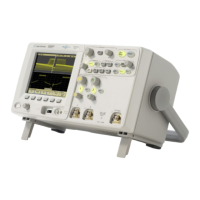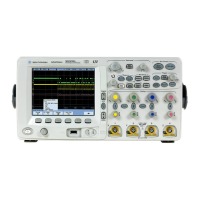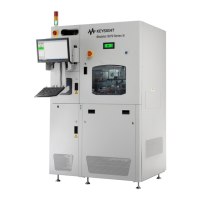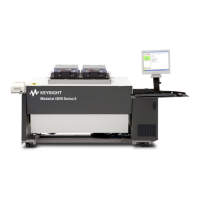Chapter 3 Timebase Measurements
Analyzing Timebase Measurement Data
Measurements Reference Guide 3-17
Refer to the online help for more information about using the Show Data
Set: TIMEBASE screen. Otherwise, you are finished making the
measurement.
Understanding timebase measurement data
When you make timebase measurements with the Agilent 5530, keep in
mind the following mathematical formulas that express velocity and
acceleration:
Velocity is the change in position (Dx = x
2
− x
1
) per unit time interval
(Dt=t
2
− t
1
), expressed as follows:
v
1
= Dx / Dt = (x
2
− x
1
) / (t
2
− t
1
)
On the Analyze Data: TIMEBASE screen, velocity is plotted midway
between the position points. For example, the first velocity point v1 is
plotted midway between t
1
and t
2
. Note that what you measure with the
Agilent 5530 is the average velocity during a specified time interval.
Acceleration is the change in velocity (Dv = v
2
− v
1
) per unit time
interval (Dt = t
2
− t
1
), expressed as follows:
a
2
= (Dv / Dt) = (v
2
- v
1
) / Dt
Using the equation for velocity, you can also express acceleration as
follows:
a
2
= ((x
3
− x
2
) - (x
2
− x
1
)) / (Dt)
2
= (x
3
- 2x
2
+ x
1
) / (Dt)
2
On the Analyze Data: TIMEBASE screen, acceleration is plotted midway
between the velocity points. For example, the first acceleration point a
2
is
plotted at t
2
.
NOTE Position may be linear, angular, or straightness. The corresponding
velocity and acceleration are linear, angular, or straightness.
